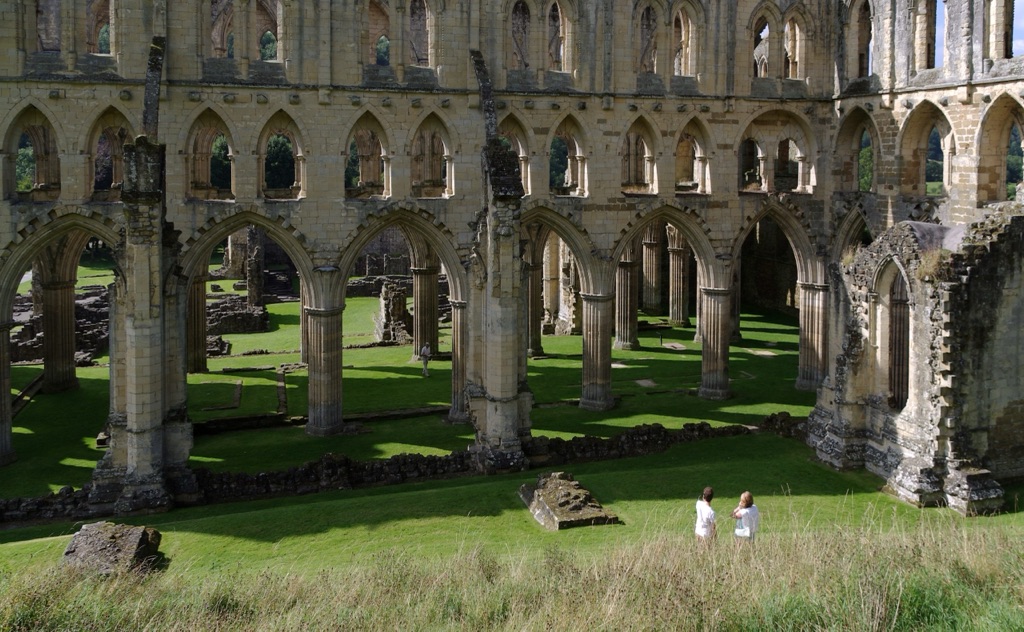Summary
A Glimpse into Rievaulx Abbey’s Rich History
As one of the first Cistercian abbeys in England, Rievaulx Abbey boasts a storied past that stretches back to its founding in 1132. Nestled in the tranquil Rye Valley, near the town of Helmsley in North Yorkshire, this historical site has captured visitors’ imaginations for centuries. Rievaulx Abbey flourished through the Middle Ages, becoming one of the wealthiest monasteries in Britain. Its expansive and well-preserved ruins today offer a vivid window into the lives of the monks who once inhabited them. The site has been carefully maintained, allowing modern visitors to walk through the extensive remains of the church, chapter house, and living quarters, tracing the steps of its medieval inhabitants.
Get your dose of History via Email
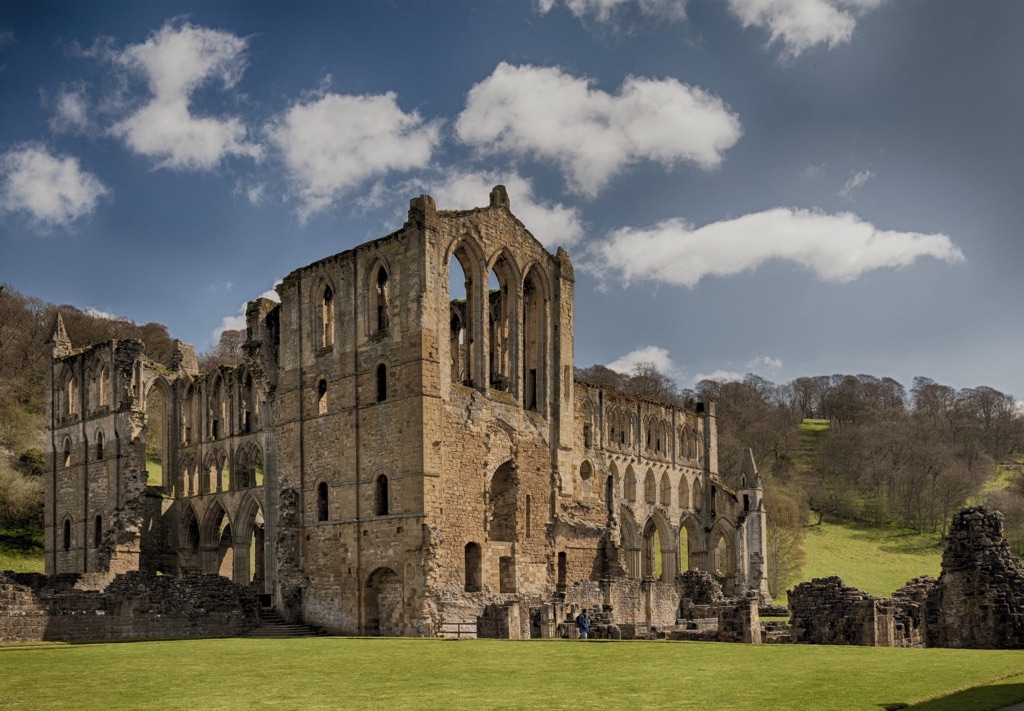
The Magnificent Architecture of Rievaulx Abbey
Rievaulx Abbey’s ruins reflect the architectural grandeur of its time, with the abbey church itself standing as a remarkable example of early Gothic design. The towering walls, arching pillars, and the remnants of ornate window tracery showcase the sophistication of the craftsmanship. The abbey was once a hub of innovation, with monks engaging in iron-smelting, suggesting industrial activity uncommon for such religious centers. Elements of the cloister, dormitory, and refectory are still recognizable, helping visitors envisage the scale and daily routines of this ancient community. The harmony of the ruins with the surrounding woodland landscape emphasizes both spiritual contemplation and communion with nature, trademarks of Cistercian abbeys.
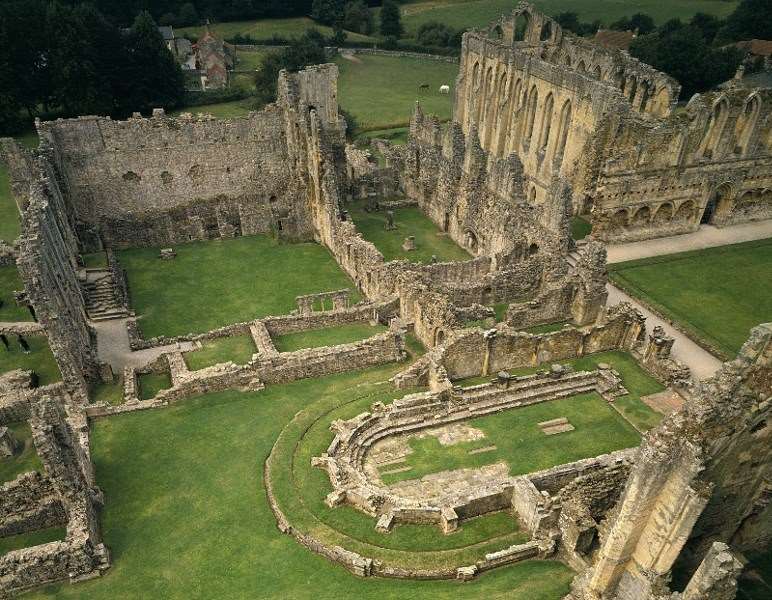
Understanding Rievaulx Abbey Today
Today, Rievaulx Abbey is a cherished historical treasure that attracts historians, archaeologists, and tourists alike. Interpretation centers on-site give context to the ruins, utilizing artifacts, models, and visual media to narrate the abbey’s evolution, peak, and eventual decline after the Dissolution of the Monasteries in the 16th century. This pinnacle of monastic life in England now serves as a poignant reminder of the transient nature of human enterprises and the enduring beauty of their legacy. The ongoing preservation efforts ensure that Rievaulx Abbey remains a place where history can be actively experienced and appreciated by everyone who visits this serene corner of Yorkshire.
Historical Background of Rievaulx Abbey Ruins in England
A Monastic Jewel Founded in the North
The creation of Rievaulx Abbey in 1132 AD marked an important moment in English religious history. Established by Walter Espec and twelve monks from Clairvaux Abbey in France, it was one of England’s first Cistercian abbeys. Originally, the abbey started humbly, with the monks living in simple wooden buildings. Over time, the abbey grew in both spiritual influence and material wealth. It became known for its piety and dedication to the Cistercian order’s values. These values emphasized a life of austerity, prayer, and manual labor.

The Rise and Majesty of Rievaulx
At its height, Rievaulx Abbey was a hive of religious fervor, community life, and economic enterprise. The community focused on self-sufficiency, with activities such as farming, mining, and crafting. The abbey also received many royal and noble visitors, adding to its prestige. Its architecture developed across centuries, with each generation of monks leaving its mark. The surviving structures of the abbey church, with its arches reaching towards the heavens, continue to inspire awe among those who wander through them.
Resilience Through the Tumult of History
Rievaulx Abbey, like many religious institutions of its time, faced challenges. The institution confronted adversities such as the Black Death and political turmoil. Yet, it remained resilient for nearly four centuries. It’s an example of the monastic community’s determination to uphold its spiritual duties against all odds. The abbey’s expansion and renovation efforts throughout this time reflect persistent resilience and adaptability.
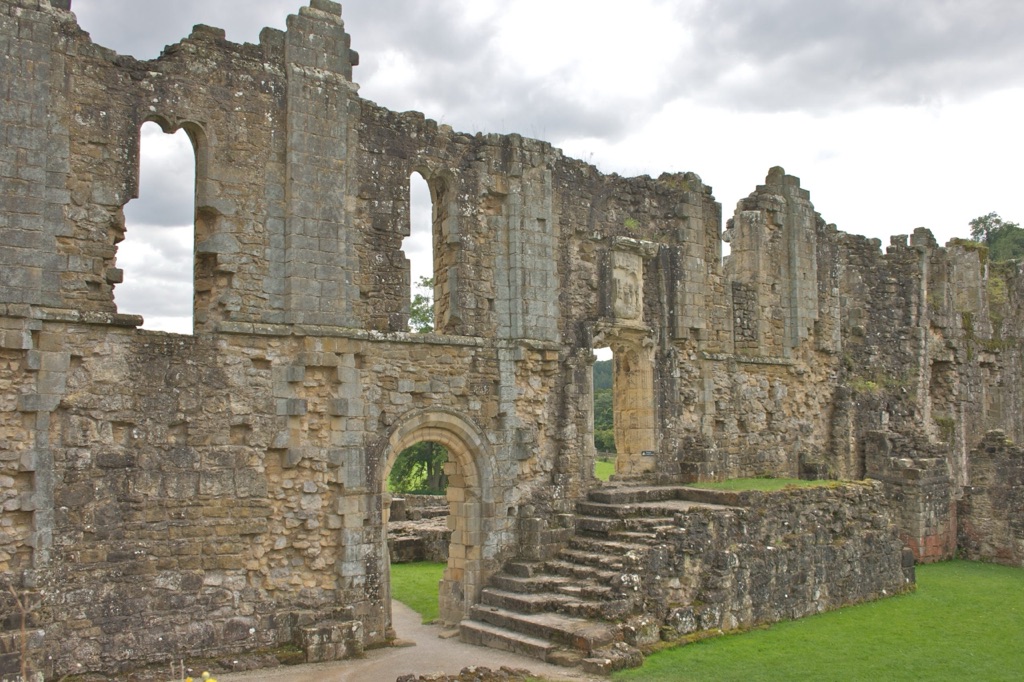
Eventually, Rievaulx Abbey succumbed to King Henry VIII’s campaign against monasteries. The Dissolution of the Monasteries in the 16th century marked the end of the abbey’s religious role. But even in decline and after the removal of its wealth, it held a presence. The surviving stone walls and arches became emblematic of a bygone era in religious history.
Today, Rievaulx Abbey lies in ruins, yet it remains deeply etched in the heart of North Yorkshire’s landscape and heritage. It stands as a testament to the spiritual life and architectural prowess of its founders and successors. Careful preservation efforts ensure that Rievaulx Abbey continues to fascinate and inspire future generations. It’s now a place of historical reflection and cultural significance, telling a story that traverses the flow of time.
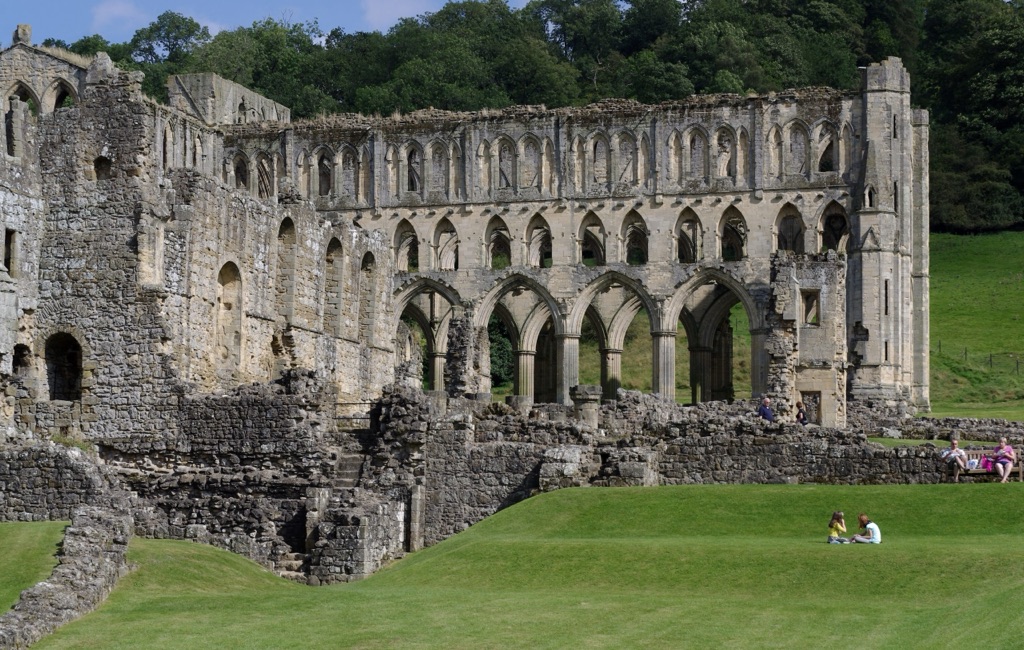
The Discovery of Rievaulx Abbey Ruins in England
The Hidden Gem Unearthed
The atmospheric ruins of Rievaulx Abbey, a testimony to England’s turbulent ecclesiastical history, were rediscovered in the 18th century. Encroaching foliage and time had shrouded the once-magnificent monastery in obscurity. Enthusiast antiquarians, notably led by the work of William Stukeley, embarked on the quest to unveil the forgotten gem of the North Yorkshire Moors. Their detailed sketches and writings rekindled interest in the splendor of Rievaulx Abbey. This newfound curiosity spawned a wave of visitors, transforming the site into a picturesque fascination during the Romantic period.
Enigmatic Ruins Captured by Artists
As artists and scholars of the 19th century sought to capture the essence of Britain’s medieval heritage, Rievaulx Abbey became a captivating subject. Its sweeping arches and columns, standing resilient yet resolute amidst natural decay, were evocatively depicted in paintings and etchings. The likes of J.M.W. Turner immortalized the abbey in art, enhancing its allure and historical significance. This artistic legacy played a crucial role in cementing the abbey’s place in the pantheon of Britain’s revered historical sites.
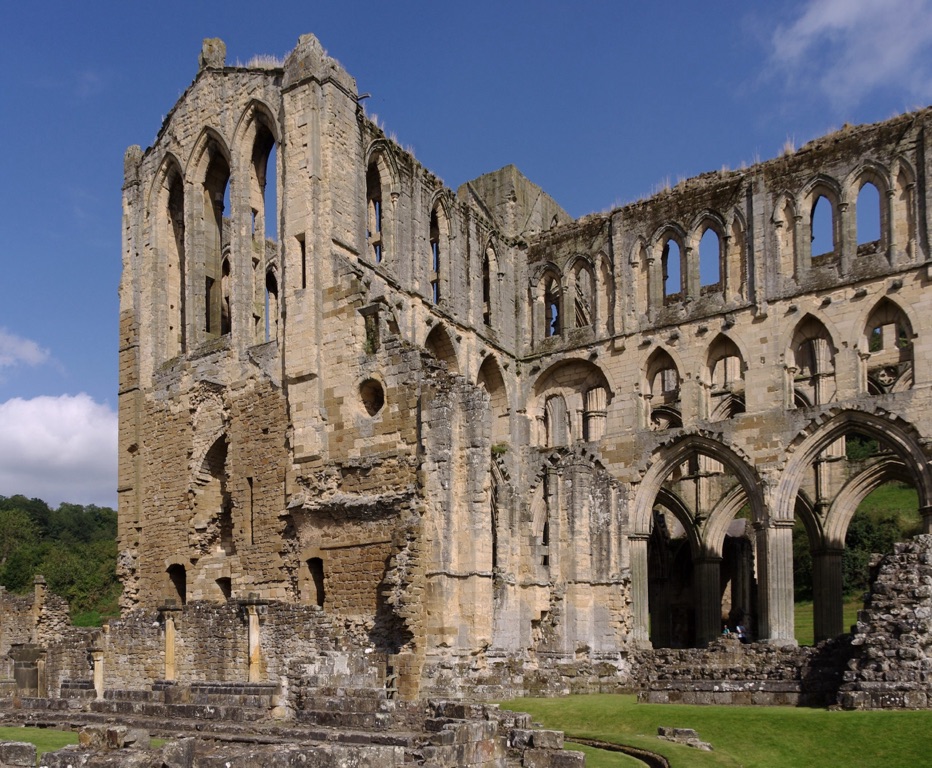
Archaeological Efforts Illuminate the Past
Archeological endeavors in the 20th century further unraveled the mysteries of Rievaulx Abbey. Excavations revealed not only the architectural splendors but also a wealth of relics that illuminated the everyday lives of the monks. These findings, ranging from handicraft tools to ecclesiastical artifacts, provided tangible links to the abbey’s storied past. Archeologists have carefully pieced together the abbey’s chronology, offering fresh insights into its former grandeur and daily religious routines.
In recent times, conservation efforts have increasingly focused on the preservation and study of Rievaulx Abbey. Such work ensures that the ruins are not lost to future generations. Moreover, these efforts enhance the visitor experience, providing educational pathways to explore this site’s extensive history. Today, Rievaulx Abbey stands as a dynamic museum of the medieval monastic life, weaving a narrative that continues to evolve with each unearthed artifact and historical interpretation.
As the backdrop of the stunning Ryedale, Rievaulx Abbey’s enthralling ruins act as a poignant historical record and a catalyst for discovery and reflection. The abbey’s story continues to unfold. Researchers endeavor to unlock further secrets held within its storied stones. The site is indelibly written into England’s cultural tapestry, offering a silent chronicle of faith, resilience, and the transient echo of bygone eras. Its discovery and ongoing exploration are crucial to understanding England’s multifaceted history.

Cultural Significance, Dating methods, Theories and Interpretations
Unlocking Time: The Use of Dating Methods at Rievaulx Abbey
Dating the storied stones of Rievaulx Abbey requires a multifaceted approach. Experts apply methods like dendrochronology to date the timber remains, giving insight into construction phases. Stratigraphic analysis offers clues about the site’s evolution through layers of human activity. The precision of these methods sheds light on Rievaulx Abbey’s past, contributing to a more accurate historical timeline. These techniques reveal a dynamic history, marked by growth and adaptation to the changing times.
The Ethos of a Bygone Era: Cultural Significance of the Abbey
Rievaulx Abbey’s cultural significance stems from its role in spiritual life and the shaping of the surrounding community. It epitomized the Cistercian pursuit of a harmonious balance between work, worship, and seclusion. The ruin’s striking features evoke the site’s past grandeur and cultural importance. Today, it stands as a place for reflection, where visitors can ponder the ideals that drove medieval monastic practices. The very fabric of the ruins preserves and conveys these values across epochs, bridging past and present.
The Enigma of the Abbey: Theories and Interpretations
Theories about Rievaulx Abbey abound, with historians debating its strategic placement and role in regional politics. Some suggest that the Abbey served as a bulwark against Scottish invasion, given its proximity to the Scottish borders. Others interpret its location as a reflection of the Cistercian affinity for remote, tranquil settings. Interpretations also vary on the extent of the Abbey’s influence, with some viewing it as a major spiritual center and others highlighting its economic impact. These multiple perspectives enrich our understanding of Rievaulx Abbey’s multifaceted history.
The remains of Rievaulx Abbey tell a story wrought with both certainty and mystery. Artifacts unearthed at the site point to a self-contained world where religion and practicality intertwined. Yet, intermittent gaps in the records fuel ongoing academic debate. Scholars analyze texts, inscriptions, and architectural styles, piecing together an intricate historical puzzle. This relentless quest for knowledge keeps the legend of Rievaulx Abbey vibrant and evolving.
Perched in a lush valley, the ruins offer a quiet respite and an echo of spiritual devotion. They serve as a touchstone for exploring medieval monastic life’s relevance in contemporary times. As both a historical record and a canvas for new interpretations, Rievaulx Abbey remains an enduring symbol of Britain’s nuanced heritage. Its stones whisper of a time when faith shaped every facet of daily existence, inviting modern minds to explore past human endeavors’ complexity.
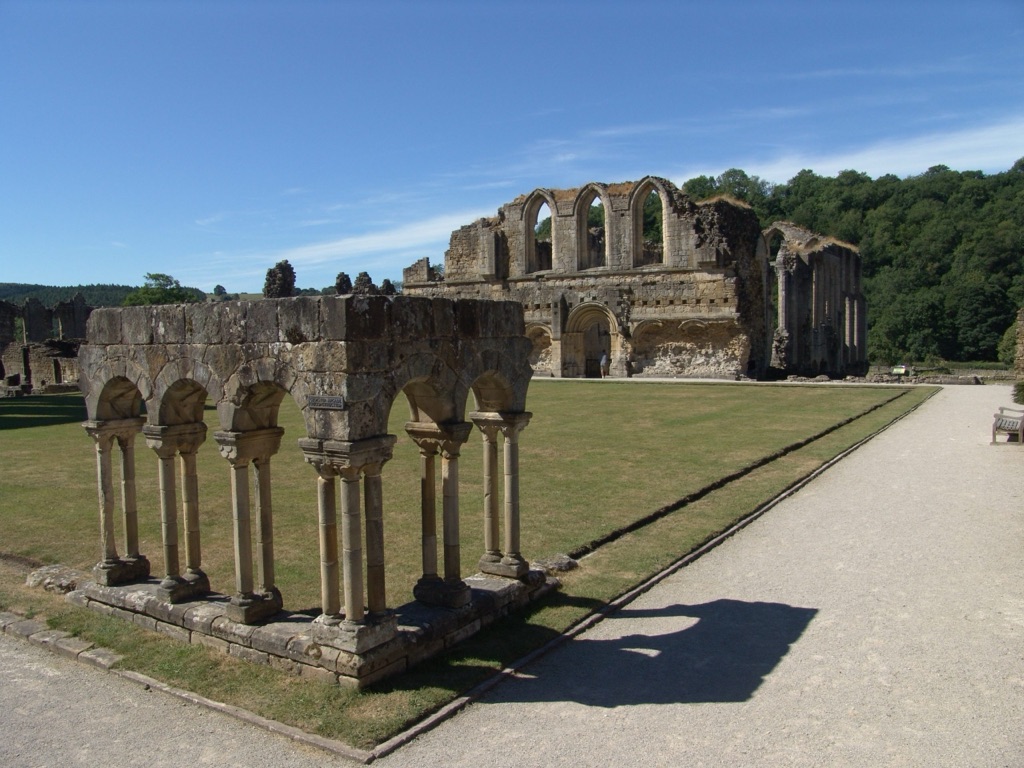
Conclusion and Sources
In the end, Rievaulx Abbey stands as an indelible reminder of a time when faith and daily life were inextricably linked. This monumental site offers not only a retreat into the solemn beauty of medieval architecture but also provides insights into the lives of the monks who lived there. The careful preservation and archaeological research that have taken place over the years allow us to vividly reimagine the abbey in its prime. Through ongoing study and interpretation, the site continues to unveil its secrets, solidifying its role as an iconic testament to England’s rich ecclesiastical heritage. As a cultural artefact, Rievaulx Abbey remains a poignant symbol of contemplation, innovation, and resilience, echoing through time to resonate with contemporary seekers of history and spirituality.
For further reading and to validate the information presented in this article, the following sources are recommended:
Or you can check any of these reputable archaeological and historical texts:
Coppack, G. (1998). Rievaulx Abbey: Social, Architectural and Economic History. York: English Heritage. ISBN 978-1-85074-686-1.
Turner, T. (2019). Rievaulx Abbey and the Search for Eternal Bliss. Yorkshire Archaeological Journal, 91, 123-141.

